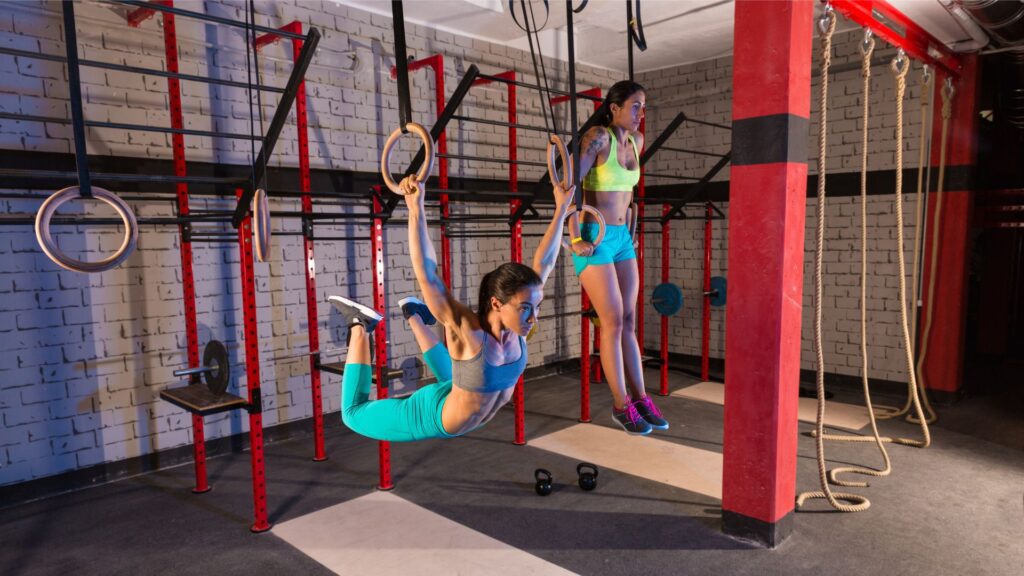Have you ever watched gymnasts gracefully transitioning from one move to another on the rings and thought, “Wow! How do they do that?” One of the most iconic and challenging moves is the ring muscle-up.
So, are you ready to take your fitness routine to the next level? If you’re aiming to increase your upper body strength and impress others at the gym, knowing how to do ring muscle ups is a great way to do so. This challenging exercise combines elements of strength, coordination, and technique to create a powerful and impressive movement. In this blog post, we will guide you through the step-by-step process of how to do ring muscle ups, providing you with valuable insights and tips to help you achieve this fitness milestone.
Understanding the Ring Muscle Up
Before we dive into the technique, it’s important to understand what a ring muscle up entails. A ring muscle up is an advanced calisthenics movement that involves pulling your body up from a hanging position on gymnastic rings and transitioning into a dip, with your body fully supported by your arms. It requires a combination of pulling and pushing movements, as well as balance and stability.
Common Mistakes and How to Avoid Them
Ring muscle-ups can be tricky. Some common pitfalls include not engaging the core, using only the arms, or not maintaining a false grip. All these can hinder your progress. But don’t fret! With proper guidance and practice, these are easily rectifiable.
Preparatory Exercises
Before attempting the muscle-up, it’s crucial to build foundational strength. Think of it like building a house: you wouldn’t start with the roof, would you?
Ring Pull-ups
This exercise helps develop the pulling strength essential for the initial phase of a muscle-up. With hands gripping the rings, pull your body up until the rings touch your chest. Rinse and repeat!
Ring Dips
To prepare for the push phase of the muscle-up, ring dips are your best friend. With arms fully extended and body below the rings, push yourself up until your arms are straight. It’s like giving the sky a high-five!
Perfecting the Technique
Once you’ve built the required strength, it’s time to dive into the technique of the ring muscle up. Here’s a step-by-step breakdown of how to perform this impressive movement:
Step 1: Set up the Rings
Start by setting up the rings at a suitable height. They should hang freely with enough space for you to jump up and hang comfortably.
Step 2: Jump and Hang
Jump up to grab onto the rings with an overhand grip. Your body should be in an extended position, with your arms fully extended, shoulders engaged, and feet off the ground. Maintain an active core throughout the exercise.
Step 3: Transition to a False Grip
To facilitate the transition, switch from a regular grip to a false grip. This involves placing your wrists through the rings, allowing your palms to face towards you. The false grip provides a better grip on the rings and helps with the transition phase.
Step 4: The Pull
Initiate the movement by pulling your upper body towards the rings. Focus on engaging your back muscles and squeezing your shoulder blades together. Keep your elbows tight to your body and continue pulling until your chest reaches the height of the rings or slightly above.
Step 5: The Transition
This is the most crucial phase of the movement. To transition into the dip position, push your chest forward and lean your upper body over the rings while simultaneously pulling your elbows down. Shift your center of gravity forward and push your head and torso through the rings.
Step 6: The Dip
Once you’ve transitioned over the rings, lower yourself into a dip position. Your arms should be fully extended, and your body should be above the rings. Lower yourself down into a dip by bending your elbows until your chest is parallel to the rings.
Step 7: Complete the Movement
Reverse the movement by pushing up through your arms and extending your elbows. The rings should move away from your body, allowing you to return to the starting position. Repeat the entire movement for the desired number of reps.
Practice and Progression
Mastering the ring muscle up takes time and practice. As you begin your journey, start with assisted variations. For example, using resistance bands or having a spotter can help you develop the necessary strength and technique. Focus on building your pulling and pushing strength progressively to ensure a steady improvement.
Conclusion
The ring muscle up is a challenging exercise that requires a combination of strength, coordination, and technique. By following the steps outlined in this blog post, you can begin your journey towards mastering this impressive movement. Remember to focus on building your upper body strength and perfecting the technique, and don’t forget to practice diligently. With time and dedication, you’ll be able to conquer the ring muscle up and take your fitness routine to new heights. So, are you ready to rise to the challenge? Start training today and enjoy the satisfaction of achieving this amazing feat of strength and coordination.
FAQs
- How long will it take to master the ring muscle-up?
- It varies for everyone, depending on factors like fitness level, dedication, and training intensity. With consistent effort, many can achieve it in a few months.
- Do I need any specific equipment besides rings?
- While rings are primary, using resistance bands can assist in training and perfecting the technique.
- Is it necessary to have a fitness background to attempt muscle-ups?
- While having a fitness foundation can help, it’s not mandatory. However, ensure you’ve built up adequate strength before attempting.
- Can I do muscle-ups every day?
- It’s essential to allow muscles to recover. Integrating them 2-3 times a week in your routine is generally more beneficial.
- Are there any risks associated with ring muscle-ups?
- Like any exercise, improper technique can lead to injury. Ensure you’ve learned the proper form and consider seeking guidance from a coach.





